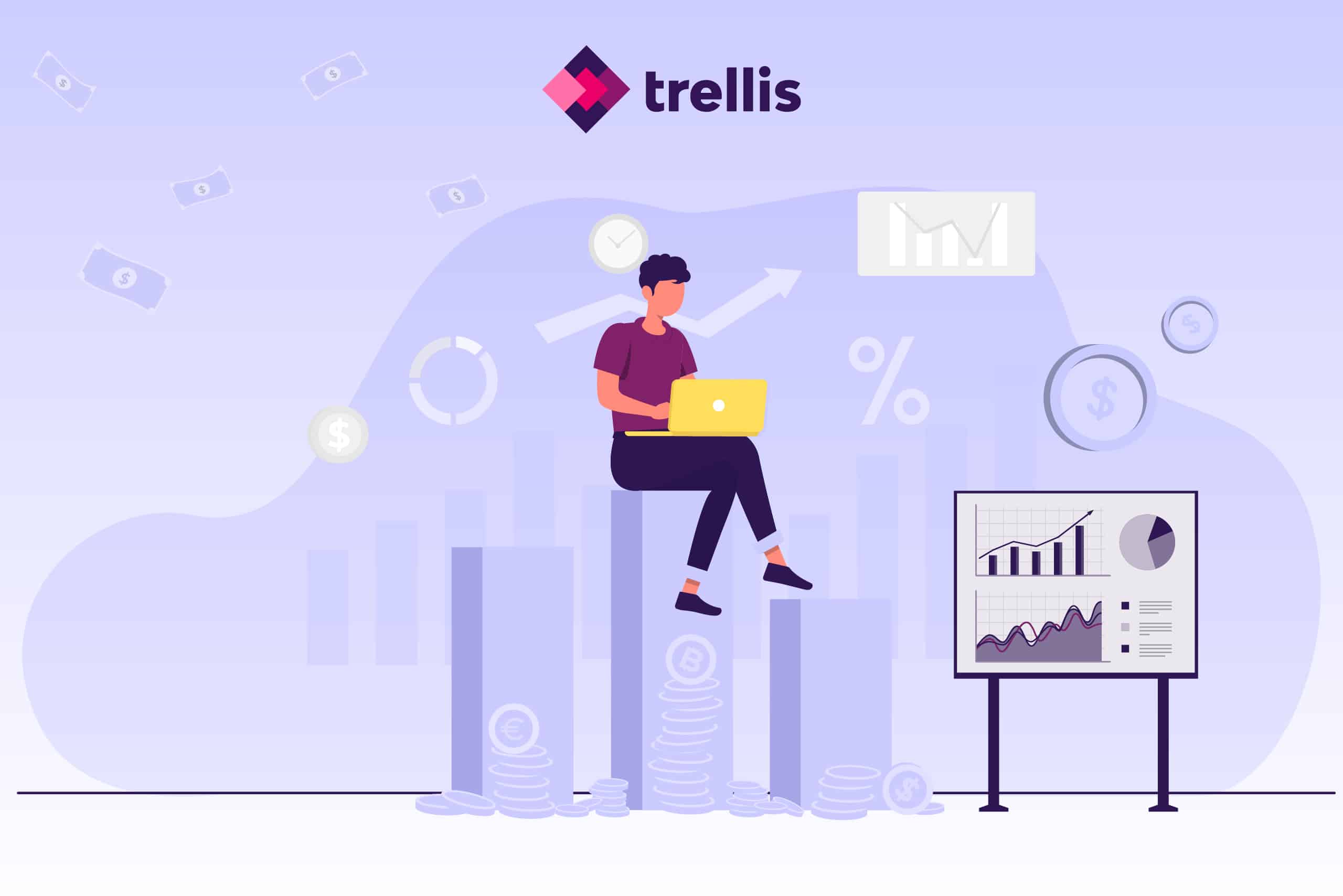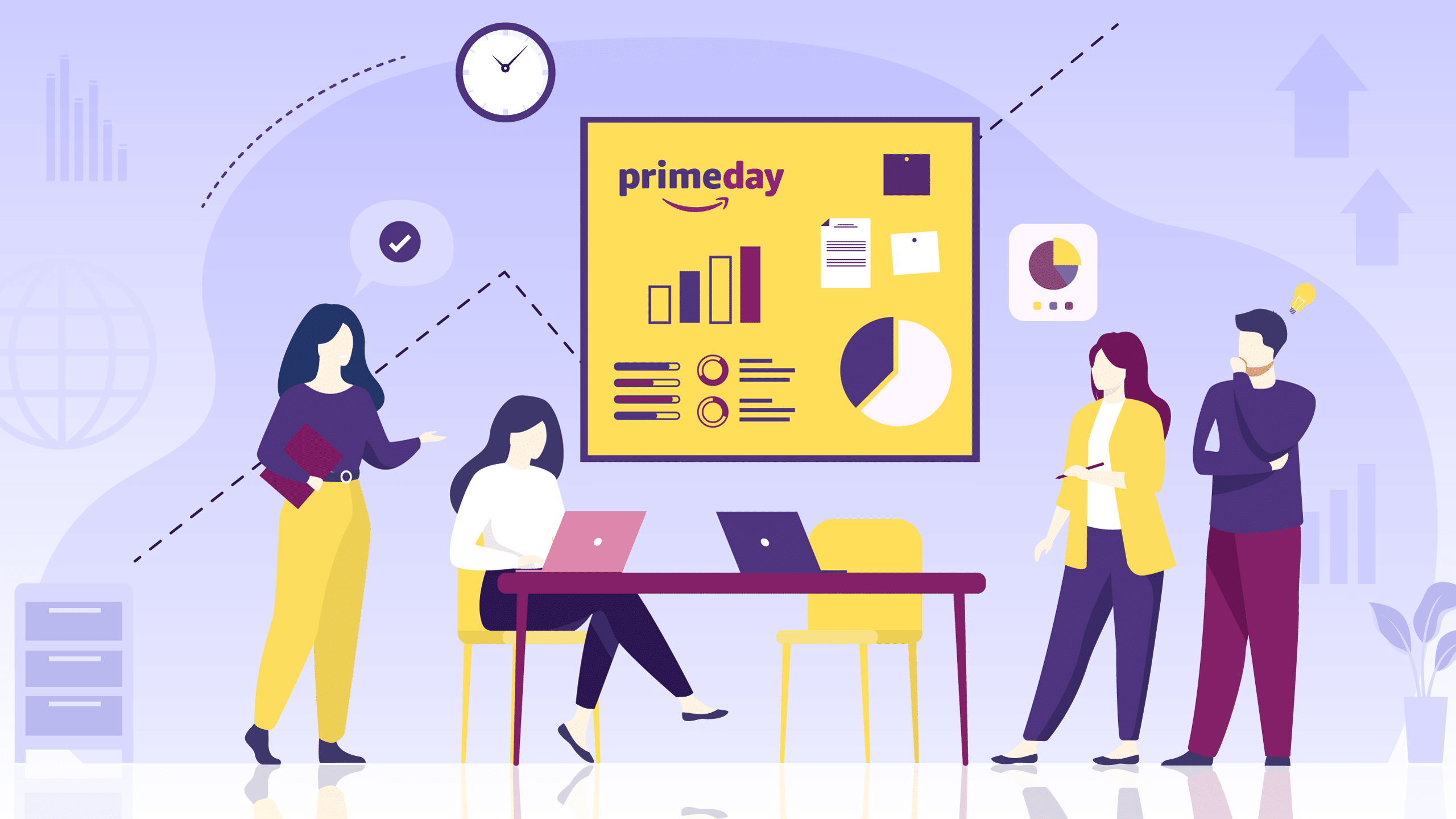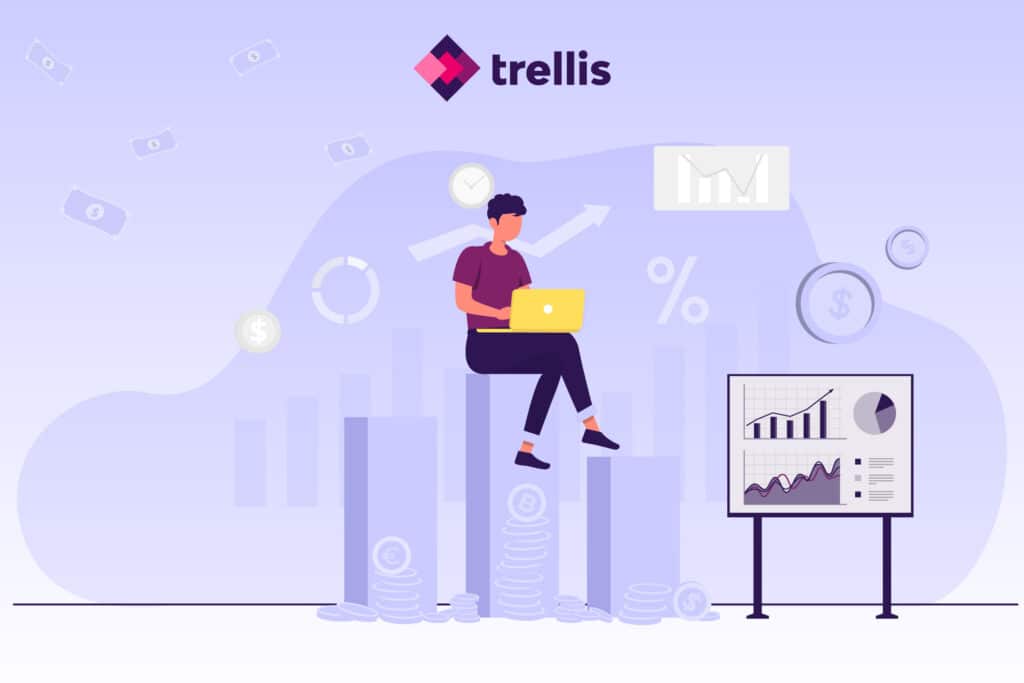Whether you’re an eCommerce seller or an in-person retailer, pricing is a significant part of product strategy. How you approach pricing will dictate everything from customer base to marketing objectives, so a solid game plan is imperative.
However, in an eCommerce space, where competition is steep and more visible—especially on large marketplace platforms where sellers with similar products are listed side by side—keeping pricing competitive can be an ongoing process. This is what you need to know about dynamic pricing, including what it is, how it works, and how you can leverage it to stay ahead.
Key Takeaways
- Dynamic pricing is a way to set pricing automatically and in real time to keep products competitive.
- Benefits to dynamic pricing include a higher chance of Amazon Buy Box wins, increased revenue, cultivation of customer loyalty, and maintaining and improving BSR.
- Basic dynamic pricing resources are available through Amazon Seller Central, but optimal results can be achieved with robust third-party tools.
What is Amazon Dynamic Pricing?
Dynamic pricing on Amazon refers to a strategy in which product prices adjust automatically depending on factors like demand, inventory, competitor pricing, and market trends. Rather than forcing sellers to monitor pricing and make manual tweaks around the clock, dynamic pricing utilizes preset rules and AI to enact solutions in real-time. More precise and easier to manage, Amazon dynamic pricing strategies help you better compete in a crowded space.
How Does Amazon Dynamic Pricing Work?
Amazon dynamic pricing works by evaluating a number of data points and adjusting pricing accordingly. This can result in pricing that ebbs and flows over time. These are some of the factors dynamic pricing models can take into account:
Price Elasticity of Demand
The price elasticity of demand can be a major driver of how dynamic pricing algorithms function. This metric can be calculated by dividing the percentage change in a product’s demand by the percentage change in product pricing. A result greater than one indicates elasticity, while a result lower than one indicates the opposite.
Many things can influence these changes, from the availability of substitutes in the marketplace to the trends in buyer behavior. There’s not always a direct relationship between elasticity and outcome; for example, sellers benefit from a lack of substitutes available, but this tends to result in inelasticity as demand won’t change as pricing increases.
Demand Volume
Demand will always play a role in pricing models; the more customers are interested in products, the more you can charge for them. In the same way that surge pricing is used on rideshare apps—the more drivers needed to meet customer demands, the more riders can expect to pay—Amazon pricing strategies will fluctuate based on consumer buying trends.
Stock Volume
When availability is limited, customers are inclined to pay more, and Amazon factors this into their approach. If stock is running low, pricing can increase to prevent product inventory from selling out entirely, and if products are well-stocked, prices may drop to encourage purchases.
Product Visit
If you’ve ever noticed lower prices after visiting a product page repeatedly, you weren’t imagining things—this plays into some dynamic pricing models. Offering a lower price after repeat visits may be the influencing factor in getting a customer to follow through with a purchase.
Time of Purchase
Trends in consumer behavior, like which days or times see the most traffic, can influence pricing strategies. Pricing may drop during off-peak hours to attract more sales, while the inverse can be true at high-traffic times. Holidays like Black Friday or Cyber Monday may also impact pricing.
Competitor Prices
Products don’t exist in a vacuum; what other sellers are doing around you will always affect the overall price. As such, how the competition is approaching pricing is generally a factor in Amazon’s dynamic pricing. If competitor prices dip, you’ll likely see the same trends in your own products.
Benefits of Dynamic Pricing for Amazon Sellers
The idea of AI-motivated price reductions can sound alarming for some sellers new to this space, but in reality, this kind of model has many advantages. Dynamic pricing is intended to find a peak price point for driving sales at all times, so overall, companies selling on Amazon can benefit in numerous ways.
Increased Revenue
It may sound counterintuitive, but pricing fluctuations can lead to more revenue. Dynamic pricing can make your products as competitive as possible, creating the ideal circumstances for a purchase. Lower pricing at the right time and to the right audience can generate more revenue than a static price intended to achieve a consistent profit margin.
Win the Amazon Buy Box
Amazon doesn’t detail the exact algorithms used to determine Buy Box wins, but the impact of pricing is made clear. Competitive pricing isn’t the only factor, but it’s a central one; sellers who are consistently pricing products higher than others with the same inventory will rarely secure this top-of-the-page positioning.
Maintain and Improve BSR
Best Sellers Rank—also called BSR—is a metric Amazon applies to the majority of products that have more than one sale. The lower your BSR for a particular product, the better; this indicates sales performance in a specific category. A product ranked #1 will indicate stronger sales than one ranked #1,000. These ranks are displayed on a product page, which can, in turn, influence customer purchasing decisions.
BSRs are based on a few factors, including product sales history, performance versus the competition, and price changes and promotions. Leveraging dynamic pricing properly can improve your rankings, effectively telling customers that you’re a safe bet to buy from.
Note that many products are sold across more than one category, so the same item may have multiple BSRs. This can take more effort to manage but can also help you see where your products are most successful.
Improve Customer Retention
Customers love saving money, and when they can find a seller who offers consistent savings, they’re more likely to come back. Delivering the right pricing at the right time can improve customer retention, which means you can count on buyers investing with you in the future.
Gain a Competitive Advantage
Overall, the benefits associated with dynamic pricing create a competitive advantage that’s hard to replicate through other means. Pricing that shifts with consumer needs will always be appealing and likely put your brand front of mind when shoppers need products like yours. When growth is a goal, the right approach to pricing can help make that happen.
How to Use Dynamic Pricing on Amazon
Dynamic pricing on Amazon can be implemented in a few different ways. Amazon has their own pricing tools sellers can use, but it’s also possible to utilize comprehensive third-party eCommerce solutions that are more sophisticated and goal-oriented than Seller Central basics.
Using Amazon Seller Central
Amazon has two rule options for utilizing dynamic pricing: Pre-Defined Automated Pricing and Create Customized Pricing. There’s no right choice; each one can offer value depending on a seller’s goals.
- Pre-Defined Automated Pricing Rule: This rule, also called the Competitive Pricing Rule, optimizes pricing for Buy Box wins. Pricing fluctuates based on pricing for current Buy Box winners, changes in competitor pricing, and prices in use from outside sources. This option is best for those hoping to get in front of as many eyes as possible, even if that means pricing lower.
- Create a Customized Pricing Rule: This rule is more flexible, allowing sellers to set their own targets and thresholds based on Buy Box, Sales Units, Lowest Price, and External Price. Instead of letting Amazon take the wheel, companies can set parameters to drive results in the most desirable areas.
Before picking a path, determine your sales goals, like conversion rates versus growing impressions, and what makes the most sense in achieving them.
To implement a custom rule, you will need to access the Automate Pricing homepage in Seller Central. From here, you can select which rule you want to apply to a particular SKU and, if appropriate, give it a unique name to best manage pricing goals over time. Choose the rule you’d like and set a primary price action—something like “match” or “beat,” among others—as well as a price margin based on percentage or amount. If you want to consider specific aspects of the marketplace, like only targeting other FBA sellers, you can fine-tune the rules in this way as well.
Once you’ve perfected your chosen Amazon dynamic pricing strategy, you can save your changes and continue the process with additional products.
Manual Changes
If Amazon’s tools aren’t the right fit for your products, or if you’re offering sales or promotions that require a specific approach to pricing, it’s possible to make manual changes. In general, solely making manual changes without any pricing tool can lead to more complications in your eCommerce objectives, but it’s an available option.
Using Third-Party Tools
For those looking for a more optimized experience, third-party dynamic pricing software offers more. These resources are generally more robust, providing opportunities above and beyond what basic models can accomplish. Tools like this can access more data, analyze it more expansively, and create curated approaches to pricing that aren’t limited by Amazon’s rule options.
Using Dynamic Pricing from Trellis
Leveraging Trellis AI-guided repricing software tools can offer significant advantages to sellers looking to branch out from the basics. Rather than relying on Amazon’s pricing models’ limitations, users can tap into datasets and refine analysis on trends and outliers designed to evolve with their business’s changing needs.
Trellis works by building Pricing Profiles for sellers’ products using user-input data as a starting point and performance over time as a guide to further changes. Based on goals for individual products and company-wide objectives, Trellis will learn how to best price products for optimal performance.
When using Trellis, sellers can expect results based on machine learning that goes beyond default strategies, yielding better performance on Amazon than Seller Central tools alone can offer.
Potential Drawbacks of Dynamic Pricing on Amazon
Dynamic pricing can be implemented in numerous ways to benefit sellers, but when not managed properly, you can put yourself at a competitive disadvantage. Keep these potential drawbacks in mind when crafting your strategies:
MAP Policies
MAP, or minimum advertised price, policies may come into play negatively when dynamic pricing is utilized. This refers to a mandated minimum price products can be listed at based on Amazon policies. Selling below MAP can get sellers into hot water in a way they may not see coming. More advanced tools, like Trellis, will consider this, but this isn’t universally true for other third-party tools.
Negative Perception
The idea of playing with pricing to drive sales may leave a bad taste in some customers’ mouths. There’s a perception of manipulation in play; many buyers know this is an expected part of online shopping, but there’s a small chance of harm to brand loyalty.
Legal Issues
Dynamic pricing is based on getting ahead in a business sense, but this ignores outside factors. How dynamic pricing appears to customers may imply discrimination against legally protected classes, resulting in legal complications.
Knowledge Gap
Not all businesses employing Amazon dynamic pricing are in a position to understand how it works or when it’s most appropriate, which can mean opting into something without adequate experience or education. This may not improve outcomes, especially if a seller’s approach to establishing dynamic pricing rules doesn’t align with business goals.
Use Cases for Dynamic Pricing on Amazon
On a more holistic level, dynamic pricing is about staying competitive. However, as outlined in these five use cases, it can be leveraged for more specific objectives.
Goldilocks Pricing
Goldilocks pricing, based on the Goldilocks and the Three Bears fairytale, is centered around the concept of “just right.” Not too cold, not too hot—or, in the case of pricing, the sweet spot that best appeals to customers. Dynamic pricing can help you find this balance, settling on a price that won’t drive the most sales or yield the highest margins but will offer the biggest benefit to your bottom line over time.
Market Penetration
Low pricing is usually a good thing for customers, but going too low can raise quality-related concerns. AI-driven dynamic pricing can help pinpoint the right pricing range to break into the market while building consumer trust.
Competitor Bidding
A competitor bidding use case is exactly what it sounds like: a strategy targeted at consistently outbidding competitors. This may not result in optimal profits, but it can be an effective option when you’re looking to disrupt an existing space, force a specific competitor out of the market, or protect the sales performance of an established product.
Stock Management
Properly managing inventory levels can be a big part of succeeding in business, and the right approach to pricing can help you avoid potential problems. Amazon penalizes sellers when products are consistently out of stock, including drops in organic rankings or removal of listings. Dynamic pricing can help you set a price point that will deter sales temporarily while you build up your inventory to desired levels.
Power Up Advertising
Dynamic pricing can go hand in hand with advertising, with one benefiting the other. Advertising can help inform customer interests and pricing tolerance, while dynamic pricing can set prices at the ideal level for conversions. By using these two tools together, you can accomplish goals like speeding up sales or reaching a Goldilocks pricing target on a shorter timetable.
Maximize Profit Margins with Amazon Dynamic Pricing
From Buy Box positioning to building a reputation with customers, how you approach pricing can play a big role in the success you see on Amazon’s marketplace. With the right strategy in place—and the right third-party tools at your fingertips, like Trellis—you can work to stay competitive in even the most cut-throat spaces. Book a demo to see it in action!






